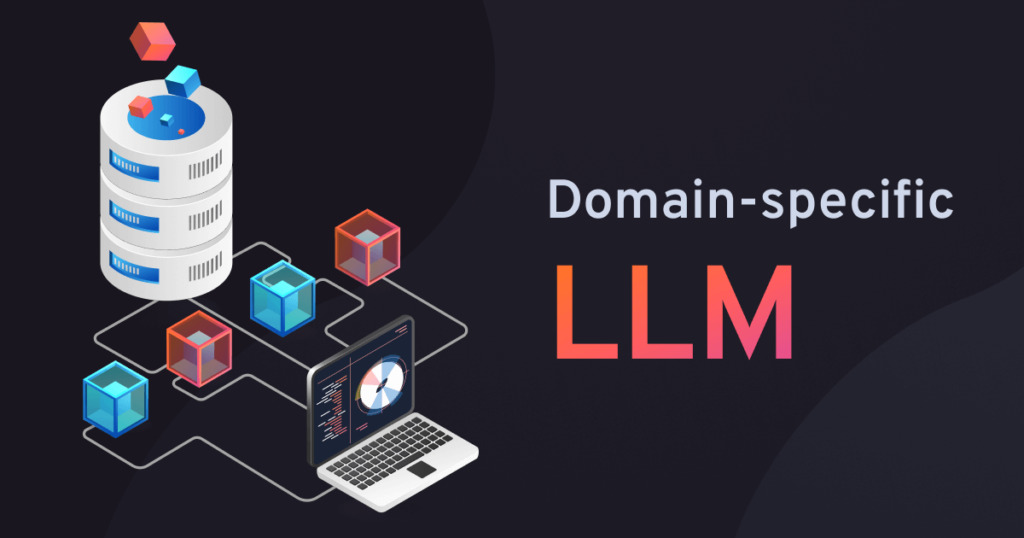ChatGPT has captivated the world, showcasing the remarkable capabilities of large language models (LLMs) in generating human-like text and codes. However, while ChatGPT and other general-purpose LLMs excel at broad linguistic tasks, they often fall short when it comes to delivering impactful solutions in industries like finance, healthcare, marketing, and legal.
This is where domain-specific LLMs come into play. From financial analysis and legal document review to medical diagnosis and scientific research — these tailored LLMs can unlock a world of possibilities for organizations worldwide.
In this article, we’ll explore domain-specific LLMs, their meaning and examples, and the impact they are having across various industries.
What are domain-specific LLMs?
Domain-specific large language models (LLMs) are designed and trained to perform well-defined tasks within specific domains and industries, such as literature, legal, healthcare, or finance.
These models are not your average jack-of-all-trades. In fact, these require a deep understanding of the domain’s context, including product data, corporate policies, industry terminologies, and specialized knowledge. Further, these are tailored to the specific language, terminology, and knowledge requirements of those domains.
The primary advantage of domain-specific LLMs is their ability to provide laser-focused and relevant outputs within their target domains. However, developing these models can be more challenging and resource-intensive.
Unlike general LLMs, domain-specific models require access to high-quality training data and expertise in the target domain. General large language models, on the other hand, are trained on large, diverse datasets from the internet, allowing them to develop a broad understanding of different topics.
For example, when analyzing a company’s financial statements, a general LLM like GPT-3, would have a basic understanding of financial terminology and concepts. However, a domain-specific LLM like FIN-GPT would correctly interpret financial statements and grasp the specific language used in financial reporting.

image source
5 examples of domain-specific LLMs in AI
Let’s dive into the five best examples of domain-specific large language models and understand their impact across various industries.
- Finance
Finance tops the list when it comes to industries that could benefit most from domain-specific LLMs.
The finance industry is all about staying up-to-date with new technologies, but it’s also big on stability and accuracy. That’s why it’s crucial for financial organizations to use domain-specific LLMs. These models have the potential to enhance performance and productivity and provide accurate decision support in financial tasks — making companies more efficient and competitive.
Further, finance-specific LLMs can accurately interpret terms like “bond yields,” “equity markets,” “derivatives,” and “risk premiums” within their proper financial contexts, something that general language models often struggle with.
Among the plethora of finance-specific LLMs, these two stand out prominently:
BloombergGPT is a 50 billion parameter large language model developed by Bloomberg, a renowned financial company. It is trained on volumes of financial data, including market reports, news articles, analyst research, and more.
This LLM has several potential use cases, such as:
- Generating insightful market analysis, investment recommendations, financial news articles, earnings report summaries, and market commentary. This enables investors and traders to make more effective and efficient investment decisions.
- Assisting Bloomberg’s clients by answering complex financial queries, providing personalized investment advice, and supporting research efforts with its deep domain knowledge.
- Summarizing lengthy financial documents, research reports, and regulatory filings into concise and actionable insights, improving efficiency for financial professionals.
- Suggesting news headlines, making it useful for news applications, and assisting journalists.
Overall, BloombergGPT has the potential to transform the finance industry by automating tasks and promoting operational efficiency and cost savings. However, it comes with significant costs, including computational resources, infrastructure, and talent acquisition. Plus, the concerns about data privacy and security when dealing with sensitive financial data.
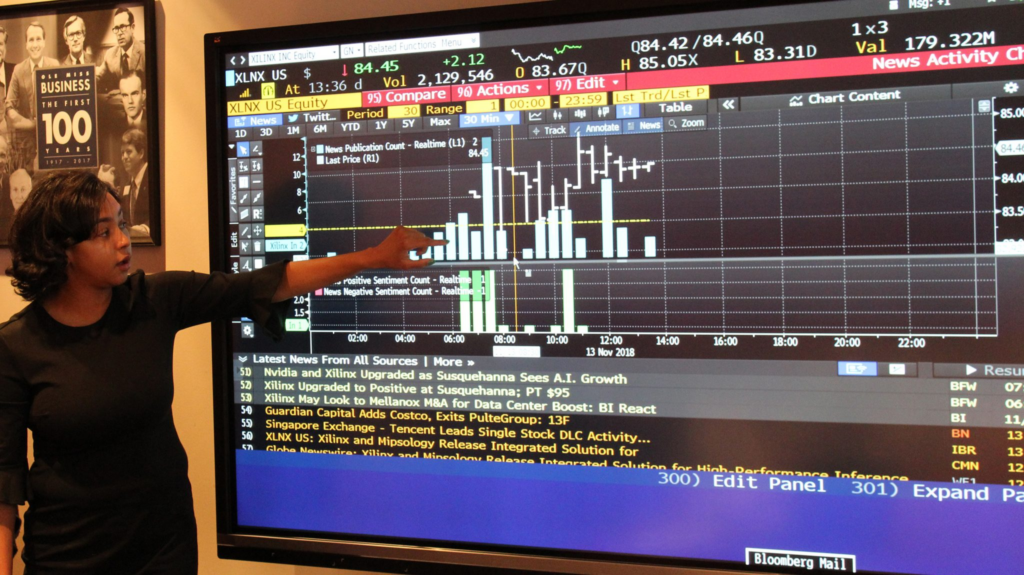
FIN-GPT is an open-source large language model (LLM) specifically tailored for the finance and investment sector. It aims to provide a more affordable and accessible alternative to premium tools like the Bloomberg Terminal.
One of the key advantages of FIN-GPT is its comprehensive financial data coverage. The model has been pre-trained on data from over 34 diverse online sources, including real-time market data, corporate financial reports, news articles, and more. This expansive dataset allows FIN-GPT to develop a deep understanding of the financial domain, from macroeconomic trends to company-specific information.
FIN-GPT doesn’t just repeat what it’s been taught — it learns and adapts. It uses a unique fine-tuning strategy called Reinforcement Learning with Stock Prices (RLSP). This approach allows the model to learn from real-time stock price movements and adjust its financial understanding based on that. It also ensures that the insights you receive are laser-focused and perfectly aligned with your objectives.
What’s more? FIN-GPT enables fast analysis of historical and real-time data, so you can capitalize on opportunities before they pass you by.
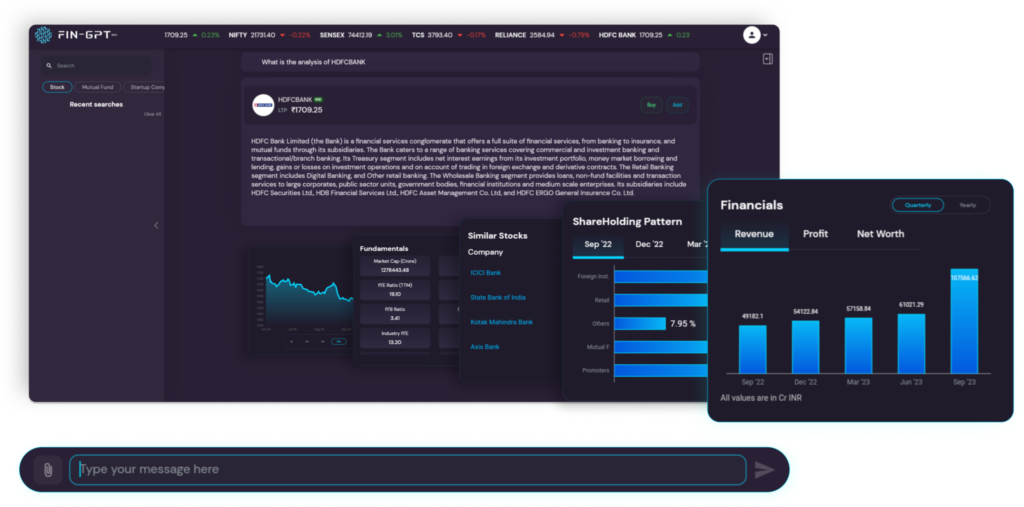
- Healthcare
The healthcare industry is drowning in an ocean of patient data and medical research, struggling to leverage it for better patient care. Traditional data analysis methods are often slow and outdated to match rapid medical advancements.
This is where medical LLMs come into play.
These powerful models have been specially trained on vast amounts of healthcare-related data, including medical journals, clinical reports, patient records, and emerging research. This gives them a deep understanding of medical terminology, disease patterns, and treatment protocols.
By leveraging these models, healthcare organizations can streamline operations, improve patient care, and safeguard sensitive data.
Some LLMs in healthcare sector are:
Med-PaLM 2 is a cutting-edge language model developed by Google specifically for the healthcare industry.
Med-PaLM 2 is no ordinary AI — it’s trained on large amounts of medical datasets, including textbooks, research papers, patient records, and more. This intensive training has helped the model to acquire deep medical knowledge, allowing it to understand the complex language and concepts used in the healthcare field.
Researchers put Med-PaLM 2 to the test by having it tackle the challenging US Medical Licensing Examination (USMLE) style questions — the same exam aspiring doctors must pass to become licensed practitioners. Med-PaLM 2 scored an impressive 86.5% accuracy, matching and even surpassing the performance of experienced medical professionals.
This shows the model’s ability to recall vast medical knowledge and apply complex reasoning to arrive at the correct answers.
The researchers also evaluated the model’s performance in answering long-form questions about various health topics. Again, the model’s responses were accurate, helpful, and even preferred over those provided by human doctors.
Using such powerful AI technology in healthcare requires careful consideration and safety measures. But there’s no doubt that this medical AI assistant represents a major breakthrough in the field of healthcare technology.
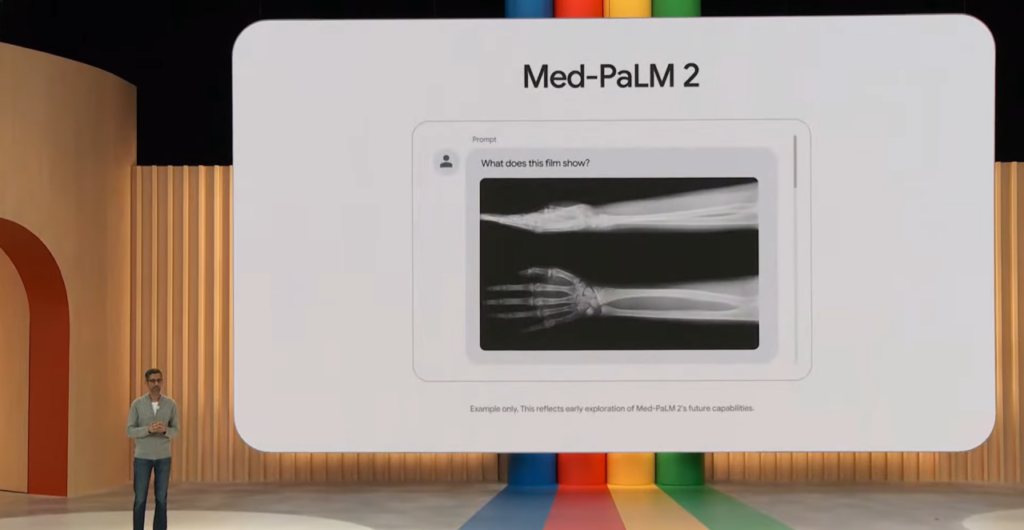
Clinical notes contain vast complex data about patients, including their medical history, symptoms, test results, and more. However, leveraging this unstructured information can be time-consuming and overwhelming, especially when healthcare professionals are already stretched for time.
That’s where large language models like ClinicalBERT come in to help.
Built on the BERT language model, ClinicalBERT is pre-trained on large clinical text data. This enables it to better understand the specialized vocabulary and syntax used in healthcare. Plus, it is well-suited to handle the lengthy clinical notes found in electronic health records.
ClinicalBERT is like a smart assistant that can quickly summarize all the important information from a patient’s medical history, lab results, and treatment notes. It takes all of that complex data and turns it into useful insights that healthcare professionals can use to provide better care for their patients.
This way, doctors and nurses get a clearer picture of their patient’s health without having to spend hours reading through notes.
Not only that, ClinicalBERT allows readmission risk predictions using the clinical notes available up to that time. This enables healthcare providers to identify high-risk patients early and take steps to reduce their readmission risk before discharge. Further, doctors can use ClinicalBERT for predicting mortality risk or diagnosing diseases.
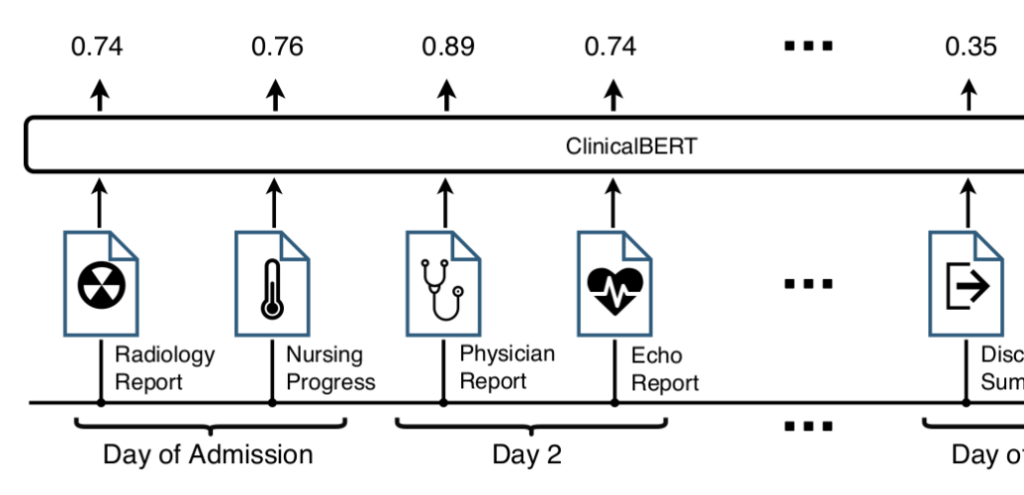
- Legal
Gone are the days when lawyers spent endless hours manually researching case law and drafting documents.
Today, large language models (LLMs) have revolutionized the way lawyers work, improving efficiency and enhancing the value they bring to their clients. Plus, these tools free lawyers to focus on more complex and strategic work and help them to quickly develop strong legal arguments.
For example, when defending a client, a lawyer could use a legal LLM to search through volumes of data, like social media posts and emails, to find evidence. For a class action lawsuit, a lawyer could leverage this model to analyze financial records and estimate the damages their client has suffered.
Here’s a great example of legal-specific LLM:
Paxton AI is an innovative legal language model. It uses artificial intelligence to transform the way legal professionals handle a wide range of tasks — from contract review and document drafting to comprehensive legal research and analysis.
Paxton AI trains its language models on tons of legal cases, statutes, and regulatory sources. It provides real-time access to millions of legal sources, including laws, court rulings, and regulations, across all 50 U.S. states and federal jurisdictions. Further, this model quickly identifies the most relevant case law and legal precedents, empowering lawyers to make informed decisions and craft winning arguments.
Paxton AI’s document analysis tool enables legal teams to effortlessly analyze and summarize large volumes of legal documents — highlighting key details, potential risks, or issues. It can also draft contracts, briefs, and other legal documents with the precision and depth of a seasoned attorney. This helps streamline the drafting process, freeing up lawyers to focus on higher-value tasks and client service.
What’s more? Paxton AI prioritizes the confidentiality and security of client data, adhering to industry-leading standards such as ISO and SOC2.

Summing Up
As the world keeps getting complicated with tons of new data and information, we need specialized tools that can cut through the clutter. The domain-specific LLMs are specially trained to be experts in specific fields.
These models don’t just have general knowledge — they dive deep into the lingo and nuances to help industries make sense of complex topics, work more efficiently, and even make game-changing breakthroughs. In short, it’s like having a team of real-life experts on call 24/7 who never get tired or need a coffee break.
However, developing domain-specific language models comes with its challenges. Not only do these require a deep understanding of the target industry but also ensure accurate, relevant, and compliant outputs. Further, different professionals must be trained to understand and interpret the model’s decision-making process to avoid monetary losses, misdiagnosis or improper care, and inappropriate use.


